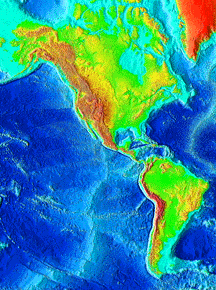This is an image of the ocean floor of the Earth, showing mountain ranges, subduction trenches, tectonic plates, and mid-ocean ridges.
Click on image for full size
Image from: U.S. Geological Survey
Cooling History, part 1
A planetary body, whether the body is a planet or a moon, cools slowly by radiating energy away into space. The warmth remaining inside a body controls what sort of surface activity, atmospheric activity, and interior activity which the body has. As planetary bodies cool slowly, heat diminishes, and the activities diminish to nothing. Examination of a body for various kinds of activities tells scientists what stage a body is in it's history of cooling.
The heat of a body comes from
- 1.) leftover heat from it's formation
- 2.) radioactive material found in the body
- 3.) outside forces on the body as a whole, such as those which cause tides
- 4.) heat brought to the atmosphere by energetic particles in space
- 5.) warming by the sun
The terrestrial planets have internal heat due to (2) above, and this source of energy drives
continental drift on the surface. The giant planets have internal
heat due to (1) above, and this source of energy drives the motions of the atmosphere.
You might also be interested in:
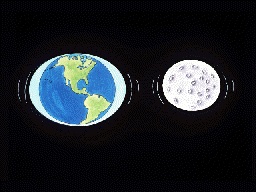
The force of gravity caused by an object gets weaker as you move farther away from that object. In this picture, the Earth is pulling on the Moon, and the Moon is pulling on the Earth. The Moon pulls more
...more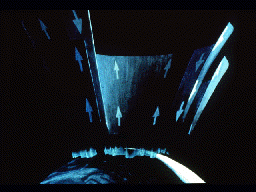
This picture illustrates the streaming of particles into and out of the auroral zone, as Field-aligned currents (FAC's) short-circuit through the ionosphere. Some of the particles entering the auroral
...more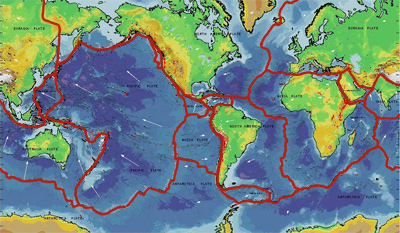
Many forces cause the surface of the Earth to change over time. However, the largest force that changes our planet's surface is the movement of Earth's outer layer through the process of plate tectonics.
...more
As the Earth cools, hot material from the deep interior rises to the surface. Hot material is depicted in red in this drawing, under an ocean shown in blue green. The hotter material elevates the nearby
...more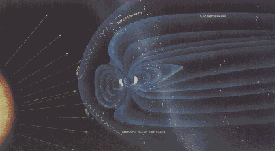
Unlike the Earth, which has a protective shield around it called the magnetosphere, the surface of the moon is not protected from the solar wind. This picture shows the magnetosphere surrounding the Earth,
...more
Most of the moons and planets formed by accretion of rocky material and volatiles out of the primitive solar nebula and soon thereafter they differentiated. Measurements by the Galileo spacecraft have
...more
During its earliest history, Mars was bombarded with *planetismals*. The impacts of these asteroid-like boulders caused the surface regions of Mars to become warm enough for continents to drift across
...more


